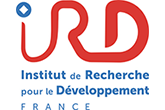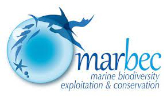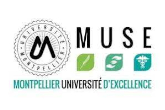[Press release] A better protection of marine megafauna through social networks and artificial intelligence
, , , , , , , & Leveraging social media and deep learning to detect rare megafauna in video surveys. Conservation Biology. 2021; 1– 11. https://doi.org/10.1111/cobi.13798
![[Press release] A better protection of marine megafauna through social networks and artificial intelligence](https://www.fondationbiodiversite.fr/wp-content/uploads/2021/08/Dugong©Julien-Willem.-Wikimedia-commons_web.jpeg) Dugong ©Julien Willem. Wikimedia commons
Dugong ©Julien Willem. Wikimedia commons Scientists from three joint research units (MARBEC, ENTROPIE and LIRMM) have just published a study using the latest technological advances to identify charismatic species of the marine megafauna of New Caledonia: dugongs, turtles and sharks. This work, entitled “Leveraging social media and deep learning to detect rare megafauna in video surveys” and published in the international journal Conservation Biology, is partly the result of the Pelagic research project financed by the Foundation for Research on Biodiversity (FRB) within its Centre for Biodiversity Synthesis and Analysis (Cesab), and is based on the collection of aerial videos financed by the Explorations de Monaco.
How can deep learning be used for rare marine species such as the dugong, or stealthy species such as sharks, for which few images are available? In New Caledonia, research is currently focused on dugongs, sharks and sea turtles, as they are the subject of specific action and protection plans, at the interface between political, societal, economic and environmental issues.
The acquisition of very large quantities of images to improve the performance of automated recognition algorithms is therefore a major challenge for these species, for which aerial monitoring is still limited and provides only a small number of observations.
The originality of the approach presented in this study is to demonstrate the potential of videos available on social networks, as a complement to aerial video monitoring, to optimise and train deep learning models to detect marine megafauna.
Rare or endangered species of marine megafauna are indeed the subject of abundant activity by the general public on social networks. This spontaneous production of images and videos is encouraged by the joint development of ecotourism, inexpensive digital devices such as GoPro cameras or drones, and broadband Internet.
In this study applied to the New Caledonian dugong, the exploitation of these resources has made it possible to build an unprecedented database. Indeed, more than a thousand images from six regions of the world covering the dugong’s range were collected on the web. These images from social networks are of limited value for in situ monitoring, due to the lack of precise geolocation information, but their major interest is to contribute to the constitution of an enriched and solid database for the optimisation of deep learning models and the automated detection of dugongs.
Compilation of aerial overflight images over the New Caledonian coasts showing some species of megafauna. These images are shot on board seaplanes or using remote-controlled drones. Good flight !
This method has made it possible to process aerial tracking of dugongs quickly and accurately. Indeed, 80% of the individuals present on the images are successfully detected automatically. It offers a new and powerful way to count and map dugongs and other charismatic marine species in order to better protect them. By combining digital technologies and massive data from social networks, it fits into the broader framework of iEcology: the study of ecological processes using online data generated for other purposes and stored digitally. This study opens up new perspectives for the large-scale spatial monitoring of large marine ecosystems.
Possible interview :
Laura Mannocci
First author of the paper
David Mouillot
Principal Investigator of the PELAGIC project
Retrouvez ici le communiqué de presse en français.
- Funding
French Fondation for Biodiversity research (FRB), Marie Skłodowska-Curie European funding, Monaco Explorations.
- Affiliations
These scientists are affiliated with the following research units: MARBEC (University Montpellier, CNRS, Ifremer, IRD), ENTROPIE (IRD, University of la Réunion, University of New Caledonia, CNRS, Ifremer), LIRMM, University Montpellier, CNRS, University Nîmes, Institut Universitaire de France.





